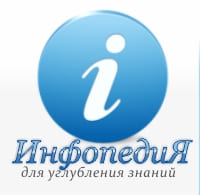
Заглавная страница Избранные статьи Случайная статья Познавательные статьи Новые добавления Обратная связь FAQ Написать работу КАТЕГОРИИ: ТОП 10 на сайте Приготовление дезинфицирующих растворов различной концентрацииТехника нижней прямой подачи мяча. Франко-прусская война (причины и последствия) Организация работы процедурного кабинета Смысловое и механическое запоминание, их место и роль в усвоении знаний Коммуникативные барьеры и пути их преодоления Обработка изделий медицинского назначения многократного применения Образцы текста публицистического стиля Четыре типа изменения баланса Задачи с ответами для Всероссийской олимпиады по праву 
Мы поможем в написании ваших работ! ЗНАЕТЕ ЛИ ВЫ?
Влияние общества на человека
Приготовление дезинфицирующих растворов различной концентрации Практические работы по географии для 6 класса Организация работы процедурного кабинета Изменения в неживой природе осенью Уборка процедурного кабинета Сольфеджио. Все правила по сольфеджио Балочные системы. Определение реакций опор и моментов защемления |
Fly-by-wire systems avionics subsonic aircraftСодержание книги
Поиск на нашем сайте
1. A radio detection device which provides information on range, azimuth and / or elevation of objects. 2. A system of one or more engines and auxiliary parts which are together necessary to provide thrust. 3. A person, organization or enterprise engaged in or offering to engage in an aircraft operation. 4. Airborne electronic equipment. 5. Any aircraft in which the cabin area is sealed off and pressurized. 6. The propulsion produced when a relatively small mass of air is given a large amount of acceleration. 7. The aircraft incapable of sustaining level flight at speeds exceeding Mach number of 1. 8. A system that moves aircraft controls by use of electro-mechanical servos and controls them by electrical signals. Ex. 24. Give definitions to the words. Aerodynamics, airliner, supersonic aircraft, turbojet airplane. Ex. 25. Choose the correct item. Mythology is full of stories about the first attempts to fly, but in modern times, the first (1) ______ was in the Wright brothers’ machine Flyer, which was (2) ______ by Orville, the elder of the two brothers, on 17 December, 1903. It was With the end of the war, pilots were used for more (10) ______ purposes: the new airlines used wartime planes as passenger carriers and (11) ______ to fly greater and greater distances. Conditions in the cabins were probably (12) ______ uncomfortable than today, and journeys were much (13) ______, without radio or any air traffic control. (14) ______ efficient lighting of the runways made landing (15) ______ and the flights became more pleasant when cabin crew were introduced. 1 A try B flight C voyage D travel 2 A driven B taken C flown D fled 3 A fastest B longest C shortest D quicker 4 A distance B place C more D further 5 A greater B higher C faster D better 6 A time B rate C amount D way 7 A more B the more C most D the most 8 A had B capable C able D managed 9 A taller B bigger C better D greater 10 A peaceful B quiet C nicer D good 11 A would B reached C began D succeeded 12 A most B much C more D more than 13 A more danger B danger C more dangerous D dangerous 14 A An B Some C More D Most 15 A safer B safely C more safe D most safe Ex. 26. Make up a summary of the text (exercises 6 and 20) using the patterns below (at least 7 sentences). 1. The title of the text is …. 2. The text consists of … parts. 3. The text is about …. 4. The first part deals with …. 5. Then the author points out that …. 6. Then the author identifies …. 7. Then the author goes into details …. 8. Next the text gives us the idea of …. 9. The last abstract deals with …. 10. In my opinion the text is … because ….
Section II. Ex. 1. Practise reading these international words. Aviation, theoretical, project, pioneer, innovation, aerodynamic, institute, army, aeroplane, training, imperial, engineer, expedition, polar, revolution, basis, history, modernize, communist, leader, transport, zone, designer, convert.
Ex. 2. Study the Glossary.
Ex. 3. Read and translate the word combinations, taken from the text. To begin several routes across the country, to conduct flights, to carry passengers and mail between cities, to transport both people and supplies across the 12 time zones, to advance innovation, to jump-start scheduled passenger service, to fly bombers that had been converted for civilian use, to be traced all the way back to, to become a basis of air fleet, need for airframes and engines, to use ex-military planes, stopping at least 3 times on each trip. Ex. 4. Answer these questions. Tell the class. 1. What scientists in Russia contributed to the development of aviation? What are they famous for? 2. What Russian aircraft designers do you know? 3. What types of aircraft did they work out? Ex. 5. Read the text and check your answers. Russian Aviation Part I Background The origin of Russian aviation goes back to theoretical projects of the 1880s by pioneer Russian scientists such as Nikolai Kibalchich and Alexander Mozhaysky. During the 1890s aviation innovation was further advanced by Konstantin Tsiolkovsky. In 1904 Nikolai Zhukovsky established the world's first Aerodynamic Institute in Kuchino near Moscow. In 1910 the Imperial Russian Army purchased a number of French and British aeroplanes and began training its first military pilots. In August 1912 the Imperial Russian Air Service, formerly part of the Engineer Corps, became a separate branch of the army. In 1913 Igor Sikorsky built the first four-engine biplane, the Russky Vityaz, and his famous bomber aircraft, the Ilya Muromets.
In the same year Dmitry Grigorovich built several 'M-type' flying boats for the Imperial Russian Navy. In 1914 Russian aviator Jan Nagórski conducted the first ever flights in the Arctic looking for the lost expedition of polar explorer Georgy Sedov. Russian air service At the beginning of World War I, Russia's air service was second only to that of France (263 aeroplanes and 14 airships), although the bulk of its aircraft was too outdated to be of much use. After the October Revolution of 1917 Russian Air Service was dissolved; more than 1300 aeroplanes became a basis of Workers' and Peasants' Air Fleet. More than two-thirds of those aeroplanes were foreign-made. In spite of Russia's need for airframes and engines, only about 5,600 aeroplanes were built in Russia before October 1917.
|
|||||||||||||||||||||||||||||||||||||||||||||||||||||||||||||||||||||
|
Последнее изменение этой страницы: 2021-02-07; просмотров: 241; Нарушение авторского права страницы; Мы поможем в написании вашей работы! infopedia.su Все материалы представленные на сайте исключительно с целью ознакомления читателями и не преследуют коммерческих целей или нарушение авторских прав. Обратная связь - 3.14.248.61 (0.01 с.) |




